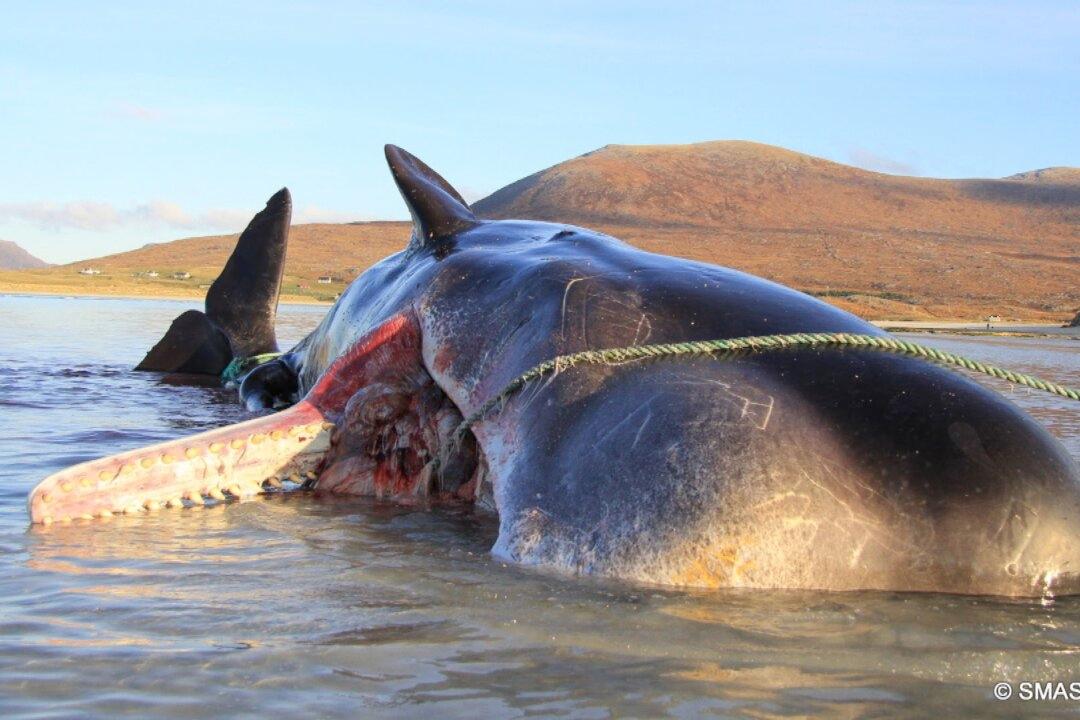A sperm whale was found dead with a 220-pound “litter ball” in its stomach after it became stranded on the Isle of Harris in Scotland, according to reports.
The mound of litter found merged together in the whale’s stomach last week included items such as plastic cups, rope, fishing nets, bags, and packing straps, reported BBC News.





